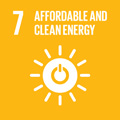- Docente: Paolo Finelli
- Credits: 6
- SSD: FIS/01
- Language: English
- Moduli: Paolo Finelli (Modulo 1) Roberto Spighi (Modulo 2)
- Teaching Mode: In-person learning (entirely or partially) (Modulo 1); In-person learning (entirely or partially) (Modulo 2)
- Campus: Bologna
-
Corso:
Second cycle degree programme (LM) in
Physics (cod. 9245)
Also valid for Second cycle degree programme (LM) in Physics (cod. 6695)
-
from Sep 15, 2025 to Dec 22, 2025
-
from Sep 19, 2025 to Dec 19, 2025
Learning outcomes
At the end of the course the student will have knowledge of the principal and most recent applications of Nuclear Physics principles and techniques applied to industrial processes as well as of the important and up-to-date applications to medicine, with emphasis to the experimental techniques used in fundamental physics research. Through realistic examples the student will acquire the capability to evaluate the particles type, energy and flux to be used in real cases.
Course contents
First part (Prof. Paolo Finelli - 24 hours)
The first part of the course is focused on the applications of nuclear physics for energy production.
The students will learn the physics behind nuclear energy (fission and fusion) how to gain energy from nuclear processes, how nuclear reactors operate safely, and the life cycle of nuclear fuel: from mining to disposal.
Here a short list of arguments (fission based)
1) Basics on neutron-matter interaction
2) Nuclear reactor reactivity
3) Critical Homogeneous Reactor Theory
4) Fuel Cycle Physics
5) Reactor Kinetics
and (fusion based)
6) Basics on Plasma Physics
7) Single particle motions (drift velocities)
8) MHD equations
9) Simple models for confinement machines: Theta Pinch, Zeta Pinch, Magnetic Bottle
10) Tokamaks
In the last part of the first part, we will focus on what matters most in the public debate: the economic and social impact of nuclear energy but also the future of energy systems.
Second part (Dr. Roberto Spighi - 24 hours)
The second part of the course is focused on the hadron therapy technique and the most used diagnostic methods to detect a cancer. All the hadrontherapy and radiotherapy technique details will be faced in order to underline their main differences. Both the electromagnetic and nuclear processes that occur between a beam and the human body will be shown for a complete knowledge of the physical processes concerning the two therapies. The main accelerator techniques (linear, cyclotron and synchrotron) will be discussed together with the main application of their uses. A part of the course will be devoted to the effect of the beam on the nuclear body making use of radiobiology and dosimetry concepts. Next to the therapy treatment, a wide panorama of the most used diagnostic techniques and their future developments will be shown. A brief description of the production of radionuclides will be also given. The details of the treated arguments are in the following scheme:
1) Short Hadrontherapy and Radiotherapy history
2) Radiotherapy (Gamma and electrons, Electron-Radiation Interaction with matter, RX production, Intensity Modulated Radiotherapy (IMRT), Intra Operative Radiotherapy (IORT), Electron Beam Therapy (EBT)
3) Hadrontherapy (Proton, ion and neutron, Particle Interaction with matter, Nuclear fragmentation, Bragg Peak, Beam production, Accelerator in hadrontherapy, Hadrontherapy in Italy and in the world, Boron Neutron Capture Therapy)
4) Radiobiology and dosimetry
5) Radiation damage
6) Diagnostic (Computer Tomography and Computer Axial Tomography, Positron Emission Tomography and Single Photon Emission Computer Tomography, Nuclear Magnetic Resonance)
7) Radionuclides production
Readings/Bibliography
All lectures and references are available on the institutional website
https://virtuale.unibo.it/
General Bibliography:
1) Bodansky, "Nuclear Energy," Springer Ed.
2) Chen, "An Indispensable Truth," Springer Ed.
3) Various Authors, "Proton Therapy Physics," Harald Paganetti, CRC Press Taylor & Francis Group
4) Various Authors, "Radiation Oncology Physics: A Handbook for Teachers and Students," IAEA Ed.
Teaching methods
Frontal lessons on the blackboard or with the use of slides.
Lectures will not be recorded.
Assessment methods
The exam is exclusively oral and is divided into two parts, which can be taken separately.
Both tests contribute equally to the final grade.
For the energy developments section, students prepare one short presentation on a list of topics (the range of topics is very broad) provided by the instructor and a short (15-20 minutes) oral exam on the course's topics.
The second part consists of an oral exam on the topics covered during the course.
Please complete the corresponding form via Almaesami.
Failure to attend will not be considered a negative factor in the grade.
The purpose of the oral exam is to assess the student's ability to apply their knowledge and make the necessary logical-deductive connections.
Final grade grading:
Limited presentation and analytical ability that emerges only with the instructor's assistance; overall correct language → 18-24;
Ability to study and analyze independently on a sufficiently broad range of topics, ability to make independent critical analysis choices, mastery of specific terminology → 25-29;
Substantially comprehensive preparation on the topics covered in the course, ability to make independent critical analysis and connection choices, full mastery of specific terminology, and ability to argue and self-reflect → 30-30L.
Students with learning disabilities (LD) or temporary or permanent disabilities: Please contact the responsible University office (https://site.unibo.it/studenti-con-disabilita-e-dsa/it) in advance. They will be responsible for suggesting any adaptations to the students concerned. However, these must be submitted to the instructor for approval 15 days in advance, who will evaluate their suitability, also taking into account the learning objectives of the course.
Teaching tools
Slides, notes and reading materials (english and italian language) will be available on the website.
Links to further information
Office hours
See the website of Paolo Finelli
See the website of Roberto Spighi
SDGs

This teaching activity contributes to the achievement of the Sustainable Development Goals of the UN 2030 Agenda.
